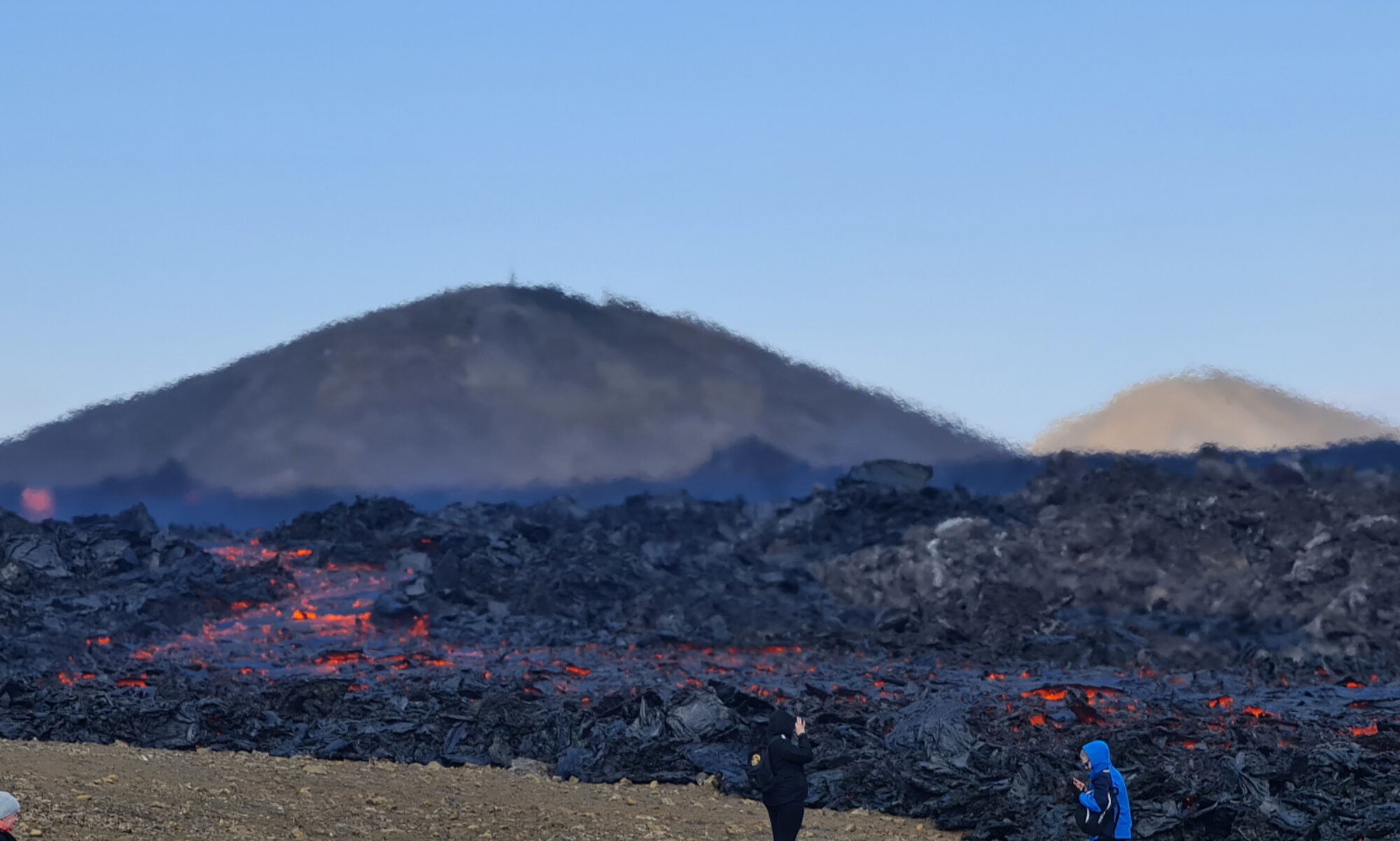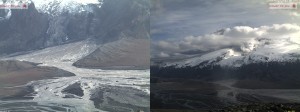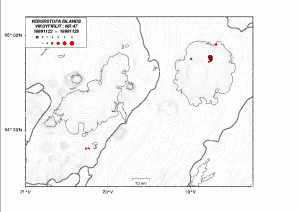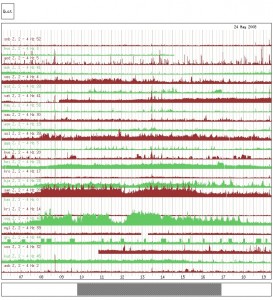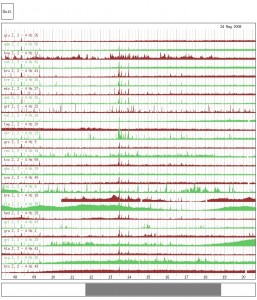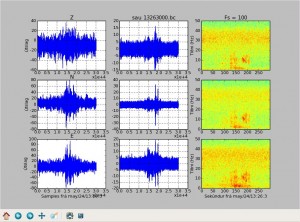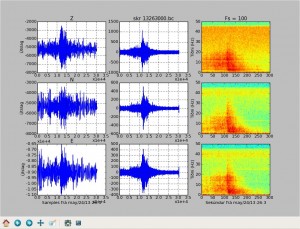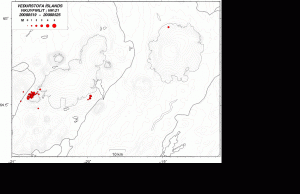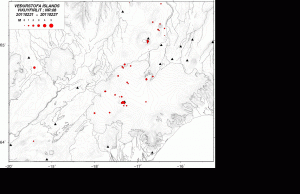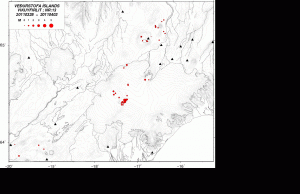Among the most quiet volcanoes in Iceland is Hofsjökull volcano. It has not erupted in at least 12.000 years from it’s main crater (far as I know). But minor fissure eruptions have taken place in the last 12.000 years in the area around Hofsjökull volcano. But they are undated far as I know. Because of that it is now known when the last eruption took place in Hofsjökull volcano. In terms of Icelandic volcanoes, Hofsjökull volcano is more complex then most. South of it lies the Kerlingafjöll volcano. A volcano known for it’s heavy hydrothermal activity. But Kerlingafjöll volcano has not erupted in historical times in Iceland. But they might have erupted in the last 12.000 years without me knowing about it. In the case of Hofsjökull volcano looks are deceiving. According to a geological map that I have of Iceland, in the case of Hofsjökull volcano it has a second magma chamber and a central volcano inside the SW part of it. That volcano is unnamed for oblivious reasons. That volcano might well behave differently then Hofsjökull volcano it self. But I would theorise that this intergrated central volcano inside Hofsjökull volcano is going to be active when Hofsjökull volcano is.
The icecap in Hofsjökull volcano is deep. At it’s deepest point it is 650 meters deep at the most. The deepest points of the icecap are in the main caldera of Hofsjökull volcano. If Chaitén volcano in Chile has teaches geologist anything. It is that a long dormant volcanoes don’t need a long time to go from dormant to active eruption. That is why I find it worrying that deep earthquakes have started to appear in Hofsjökull volcano, even if they are extremely rare so far.
Over the past ten years or so there has been a slight increase in earthquake activity in Hofsjökull volcano along with increase in hydrothermal activity. But so far it has just been a minor earthquakes. The strongest ones getting up to ML3.0 at the strongest. No earthquake swarm have ever been recorded in Hofsjökull volcano to my knowledge (since recording begin in Iceland).. Last earthquake swarm was recorded in Hofsjökull volcano in the year 1999, then a earthquake swarm of 22 earthquakes took place, all of those earthquakes where just minor earthquakes. Besides being one of Iceland largest volcanoes, its location also makes it extremely dangerous. As it is located in the middle of Iceland, and a glacier flood from it could go many different ways down to the ocean and over large populated areas in Iceland. The increase in hydrothermal activity started in Hofsjökull volcano in the year 1994 or about that time. It was at least first documented in that year. A sulphur smell was recorded when the homoeothermal vent was checked out that year in Hofsjökull volcano. Increase in hydrothermal activity in Hofsjökull volcano is interesting as it is followed by a slight increase in earthquake activity over a long period of time.
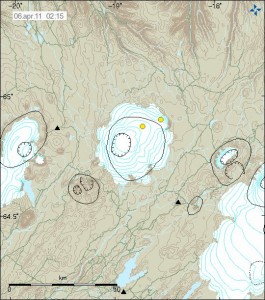
Location of the two earthquakes. The deep earthquake is the one closer to the caldera. This picture is from Icelandic Met Office web site. The copyright of this picture belongs to them.
The earthquake that started me to get worrying about Hofsjökull volcano is the earthquake that took place 10:11 UTC on 5. April 2011. That earthquake had the depth of 27.6 km. It’s size was ML1.4, so it was a small earthquake. I do not believe that this depth is a result of a error in the SIL system (can happen sometimes). A second earthquake took place at 10:13 UTC, its size was ML1.6 with the depth of 1.6 km.
Whatever that is happening in Hofsjökull volcano is worth watching. Even if it not going to erupt just yet. It is also my opinion that Hofsjökull volcano is not part of Western Iceland Rift Zone (pdf). But its is the most southern part of a failed rift zone often called Skagafjörður volcanic zone (pdf). It is a failed volcanic zone that is mostly extinct, only Hofsjökull volcano and Kerlingarfjöll volcano remain active in that volcanic zone at the most southern end of it.
Other information.
Jarðhiti í Hofsjökli (Tímarit.is, Icelandic, 1996, pdf) – Article with picture of where the hydrothermal vent was found in Hofsjökull glacier.
Hofsjökull (Wiki, english)
Text updated at 18:11 UTC on 6. April 2011. Minor fixes in the text.
